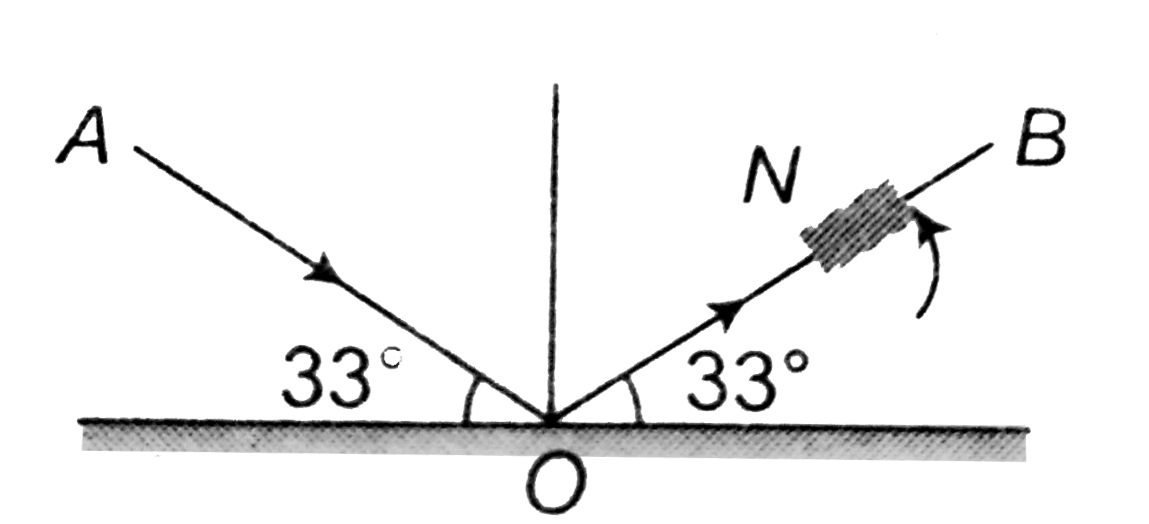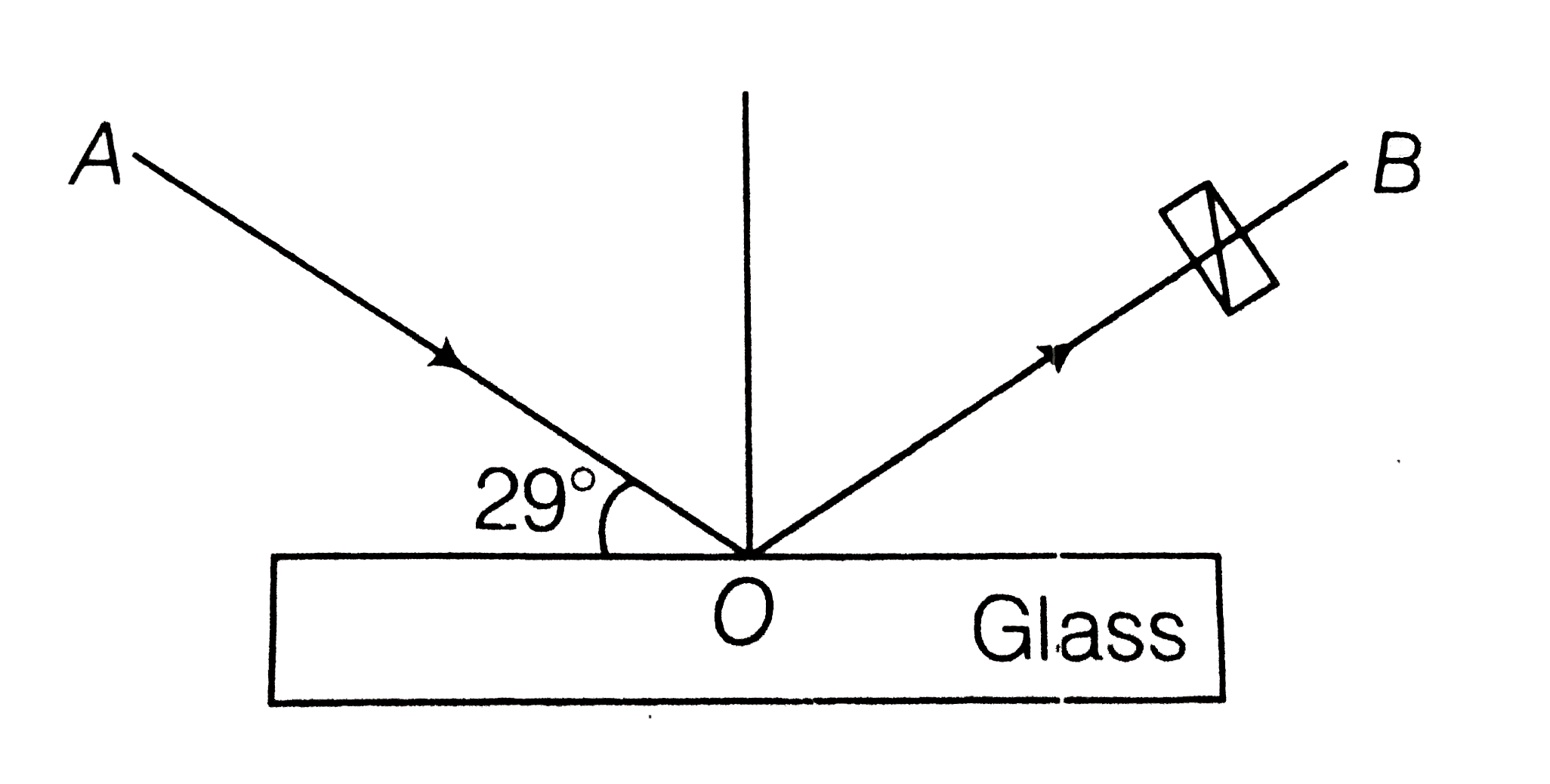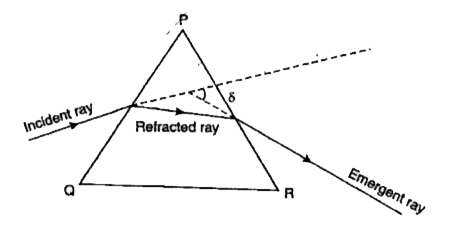A beam of light AO is incident on a glass slab (μ=1.54) in a direction as shown in figure. The reflected ray OB is passed throught a Nicol prism. On viewinf through a Nicole prism, we find rotating the prism that (tan−11.54=57∘)

the intensity si reduced down to zero and remains zero
the intensity raduces down some what and aganin.
There is not change in intensity.
The intensity gradually reduces to zero and then again increases.
The correct Answer is:D
Step by step video & image solution for A beam of light AO is incident on a glass slab (mu=1.54) in a direction as shown in figure. The reflected ray OB is passed throught a Nicol prism. On viewinf through a Nicole prism, we find rotating the prism that (tan^(-1)1.54=57^(@)) by Physics experts to help you in doubts & scoring excellent marks in Class 12 exams.
Updated on:21/07/2023Topper's Solved these Questions
- WAVE THEORY OF LIGHT Book:TARGET PUBLICATIONChapter:WAVE THEORY OF LIGHT Exercise:EVALUATION TEST
Explore 20 Videos
- WAVE THEORY OF LIGHT Book:TARGET PUBLICATIONChapter:WAVE THEORY OF LIGHT Exercise:CRITICAL THINKING
Explore 43 Videos
- WAVE MOTION Book:TARGET PUBLICATIONChapter:WAVE MOTION Exercise:MCQ 7.1
Explore 61 Videos
Similar Questions
A beam of light is incident on a glass slab (μ=1.54) in a direction as shown in the figure. The reflected light is analysed by a polaroid prism. On rotating the polaroid, (tan57∘=1.54)

View SolutionA light beam is incident on a rectangular glass plate (μ=1.54) The reflected light OB passes through a nicol prism.
On observing the transmitted light while rotating the prism, it is seen that

View Solution
Knowledge Check
A beam of light AO is incident a glass slab (μ=1.54) in the direction show. The reflected ray OB is passed through a Nicol prism. On viewing through a Nicol prism, we find on rotating the prism that
 Athe intensity is reduceed down to zero and remains zeroBthe intensity reducees down somewhat and rises againCthere is no change in intensityDthe intensity gradually reduces to zero and then again increases
Athe intensity is reduceed down to zero and remains zeroBthe intensity reducees down somewhat and rises againCthere is no change in intensityDthe intensity gradually reduces to zero and then again increasesIf unpolarized light falls on a glass plate (μ=1.54) at an incidence angle of 57∘, the reflected light is
AunpolarizedBcompletely polarized with dot vibrationsCcompletely polarized with dash vibrationsDpartially polarized with 15% dot and 85% dash vibrationsIf unpolarized light falls on a glass plate (μ=1.54) at an incidence angle of 57∘, the reflected light is
AunpolarizedBcompletely polarized with dot vibrationsCcompletely polarized with dash vibrationsDpartially polarized with 15% dot and 85% dash vibrations
A ray of light strikes a plane mirror at an angle of incidence 45∘ as shown in Figure . After reflection,l the ray passes through a prism of refractive indes 1.5 whos apex angle is 4∘. Through what angle must the mirror be rotated it total deviation of the ray be 90∘ ?

View SolutionA ray of light passes through a right angled prism as shown in the figure. State the angle of incidence at the faces AC and BC.

View SolutionA ray of light is incident on a glass plate of refractive index 1.54. If the reflected ray is completely plane polarised, find (i) angle of incidence (ii) angle of refraction and (iii) crictical angle. Given tan57∘=1.54 and sin40.5∘=0.6493.
View SolutionA ray of light passes through a prism as shown in the figure.

The angle δ is known as
View SolutionIf the light waves pass through a nicol prism then all the oscillations occur only in one plane, such beam of light is called as
View Solution

